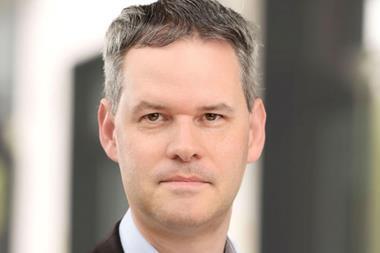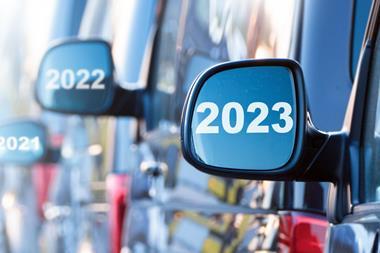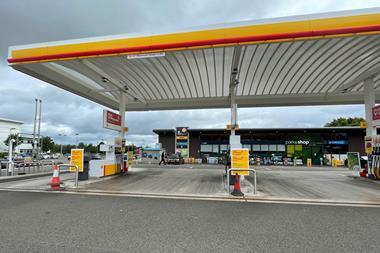A future where battery- powered and hybrid vehicles are superseded by vehicles running on hydrogen fuel cells was predicted by Jon Hunt, manager, alternative fuels, at Toyota. Speaking at a conference organised by the Westminster Energy, Environment & Transport Forum, he explained why the company that produced the world’s first mass-produced, battery-powered car, and hybrid, was now working towards a future where hydrogen fuel cells become the predominant technology.
Hunt said Toyota was the sixth largest company, by revenue, in the world, and its largest car maker, producing about 10 million cars a year in 67 manufacturing plants, including two in the UK. Across the globe there are about 90 million Toyota-badged vehicles currently in use. The company has set itself an environmental challenge to achieve zero emissions in its vehicles, in their production and in their life cycle by 2050, and to achieve this he believes electrification is essential across all forms of transport.
Toyota has a long history in electrification, with the Prius becoming the first mass-market electrified car when it was introduced in 1997, and since then it has sold 13 million units. The company also introduced the world’s first plug-in electric hybrid vehicle with the Prius in 2012, but in 2015 it moved in a new direction with the launch of the world’s first mass-produced fuel cell vehicle the Mirai. Hunt said there were several reasons why Toyota did not push on fully with the battery option. "There are a number of challenges. Battery life is a concern. How long will they last? Can you recycle them? Lithium ion batteries must be incinerated. Range means a bigger battery and that brings greater impact on resources and energy. What is often not acknowledged is the impact of the resources required. Particularly in the case of lithium cobalt batteries is the issue of cobalt and lithium where it came from, the social impact, about the environmental degradation, and the cost in energy and emissions to produce?"
He also warned: "If you in the UK are to see the complete vehicle fleet transferred into electric vehicles you will need twice the global resources of cobalt, three-quarters of the world’s lithium production, and we’ll need 20% more energy delivered to the source of charging. It is an extremely difficult thing to do quickly. Therefore you need a transition. We see battery electric vehicles in small duty cycles which are defined and you can charge them. Hybrid and plug-in hybrid vehicles are essential. They reduce emissions by a quarter, and then fuel cell vehicles. They are brilliant for passenger cars, they are even better for larger vehicles. This transition will occur, and it is not just Toyota that is saying this."
He cited a global automotive executive survey by KPMG this year, in which 79% of executives said they believed fuel cell technology was the future for electric mobility, adding: "China is moving into this area and investing huge resources, so it is not just the world’s largest motor manufacturer that is suggesting this, it is the global automotive sector that suggests this as well."
Explaining the thinking behind the launch of the Mirai he said: "It was a chicken and egg situation and we decided to bring the chicken forward, so we introduced the Mirai.
"The production of these vehicles is just 3,000 a year because you need the infrastructure to join up with them. There are 120 in the UK, of which 80 are in London, working in areas that are difficult to decarbonise, such as police response vehicles and taxis. We are demonstrating the durability, reliability and practicality of fuel cell passenger cars.
"Remember you are seeing the first generation of the car, the Tesla Model 3 is on the third or fourth generation and there are some pretty heavy constraints with that vehicle. The leap forward in the new generations of fuel cell vehicles you will see on the market will be huge."
He predicted that the cost of the Mirai would come down saying there would be price parity by 2025, and that hydrogen fuel cells would add a new dimension to the market. He explained: "About 70% of your cost of ownership is the depreciation of the vehicle, but if you have a fuel cell it doesn’t wear out, it lasts beyond the life of the car, and is essentially an electric generator that can be used for a lot of purposes. You are retaining a huge amount of value in your vehicle. So it will change the business model.
"The fuel cell is very much the way we are heading."
Government strategy
The government’s view on electrification was provided by Stephanie Edwards, head of infrastructure policy in the UK Office for Low Emission Vehicles (OLEV), the central government team that leads on electric vehicle (EV) policy for the UK.
In addition to the highly publicised cut-off in 2040 for sales of new cars and vans with internal combustion engines, Edwards said there was a target of 50-70% of new car sales to be ultra-low emission by 2030.
Measures that have been taken to increase uptake of EVs include new CO2 regulations which will incentivise supply of cleaner vehicles and green number plates to raise the profile of ultra-low vehicles.
Edwards said the government was also investing in research and development, and had made a number of new policy announcements. These include a consultation on installing chargepoints in all new houses and some public buildings, and ensuring that all new chargepoints will be smart chargers. There will also be £400m funding to help build the UK’s charging network, and a review to develop "a vision" for rapid and high-speed charging along England’s key road networks, to facilitate longer journeys.





























No comments yet